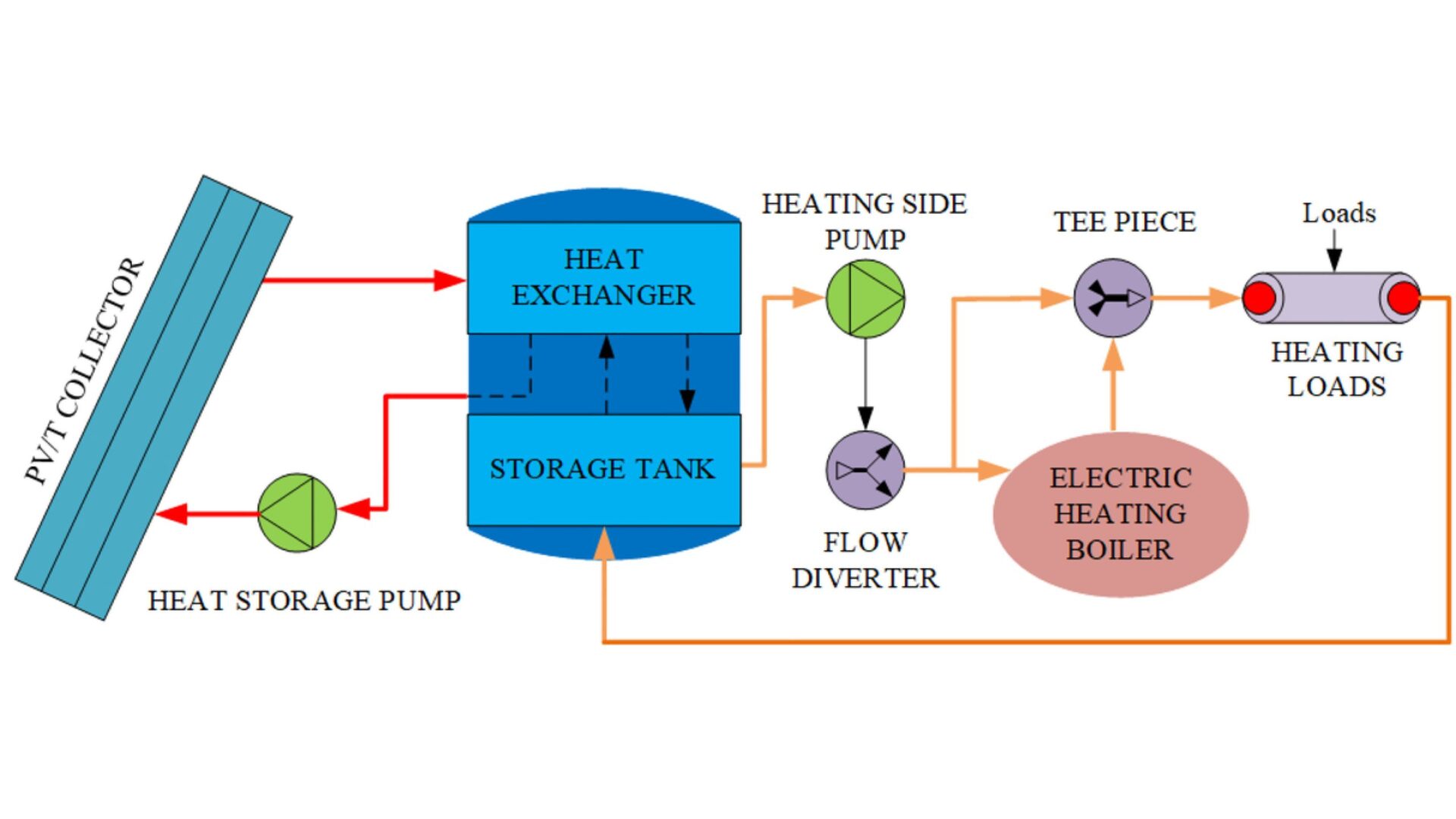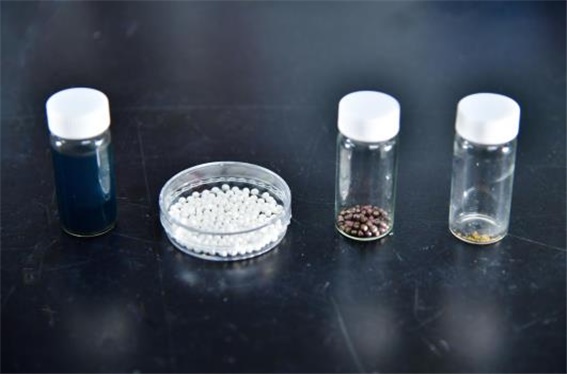
Flow diagram of solar-biomass hybrid system
CREDIT: Gaoyang Hou and Lei Xu/ Northwest A&F University
Model addresses solar power’s intermittency problem in renewable energy heating systems
Adding an organic matter power source to a solar energy unit could provide 100% heating for a single-story home during the coldest months of the year and help the environment. In the warmer months, the system could generate electricity surpluses that can be sold back to the grid.
In Journal of Renewable and Sustainable Energy, published by AIP Publishing, researchers in China and the United States outline a computer simulation model addressing the challenge of solar power’s inherent intermittency by adding biomass as another renewable energy source to advance a reliable, affordable heating solution while reducing carbon dioxide emissions.
“We demonstrate how this hybrid system provides a cleaner, more energy-efficient heating solution than fossil fuel in single-family homes,” co-author Gaoyang Hou said. “The system would be convenient in rural communities, where farms have large amounts of biomass in the form of agricultural waste that can be combined with solar power to close the urban-rural electricity gap and help the environment in the process.”
The proposed solar-biomass hybrid system is based on distributed multi-generation technology that integrates photovoltaic-thermal (PV/T) and biomass power sources.
Biomass is produced from renewable organic matter, like corn husks, nut shells, wood pulp, and food and animal waste. A PV/T system, composed of PV panels and thermal collectors, is an emerging technology that converts solar energy into both heat and electricity with higher energy conversion efficiency.
Studies on emerging decentralized hybrid systems have focused on neighborhoods and commercial greenhouse farms. The researchers evaluated their system based on the heating needs of a single-story cottage from November to March in northwest China, where temperatures in winter can dip below minus 20 degrees Celsius (minus 4 degrees Fahrenheit).
Of the total energy input, the PV/T collector generated 52% of the electrical energy and captured 8% of the available thermal energy. The biomass generated the remaining 40% of the electricity needed to heat the house.
“For the entire heating season, solar power predominates the energy supply side, with the biomass energy generation kicking in when needed to make up the energy deficit,” co-author Lei Xu said.
They created their simulation model in TRNSYS (short for transient system simulation tool), a modular thermal system software used to assess the performance of thermal and electrical renewable energy systems.
Their hybrid system simulation consisted of a PV/T collector, heat pump, storage tank with an immersed coiled-tube heat exchanger, flow diverters, and backup electric boiler, among other components.
The researchers are developing a solar-biomass system model to meet heating and cooling demands of a small commercial building and, if successful, plan to develop a prototype for experimental testing.
Original Article: Solar-biomass hybrid system satisfies home heating requirements in winter
More from: Northwest A&F University
The Latest Updates from Bing News & Google News
Go deeper with Bing News on:
Solar-biomass hybrid system
- Wind turbines ready to install at remote mine microgrid, after making longest road journey of 850km
Alongside the wind component, the microgrid being built by Zenith will include a 16.9MW solar farm and a 12MW/13.4 MWh battery. All up. the system will deliver approximately ... will be the largest ...
- Hybrid system combining CPV, ionic thermocells achieves 49.63% energy efficiency
A group of scientists from the North China Electric Power University developed a hybrid energy system combining concentrated photovoltaics (CVP) and liquid ionic thermocells (iTECs). “The application ...
- MIT spinoff unveils continuous solar power solution technology
Enter 247Solar, a company pioneering a novel approach to concentrated solar power (CSP) that addresses these limitations. Their high-temperature systems boast overnight thermal energy storage, ...
- PG&E in talks with KKR to sell minority stake in power business
PG&E is in discussions with KKR, a US private equity firm, to divest a minority stake in its power generation operations.
- Electric tariff hike for premium users: Four practical ways to cut back on consumption
When the new tariff hike was announced by the Nigerian Electricity Regulatory Commission (NERC) on April 3rd, it was met with ...
Go deeper with Google Headlines on:
Solar-biomass hybrid system
[google_news title=”” keyword=”solar-biomass hybrid system” num_posts=”5″ blurb_length=”0″ show_thumb=”left”]
Go deeper with Bing News on:
Solar-biomass system
- Greening the Grid: A Guide to Sustainable Energy and Fuels
In our modern world, the quest for sustainable energy and fuels has become more urgent than ever. With the growing concerns over climate change and the depletion of fossil fuels, there's a pressing ...
- Jetwing Hotels invests USD 1 Mn to increase reliance on solar power
Jetwing Hotels, in the Sri Lankan hospitality industry for over five decades, has invested over USD one million to expand its ...
- Reimagining energy: How former fossil fuel sites are driving the renewable revolution
Sustainable and renewable energy sources like solar and wind are all the rage nowadays ... In Australia, a former coal-fired power plant site was repurposed for a 150 MW/150 MWh battery system by ...
- Govt to push public hospitals to use solar energy
The government is planning some initiatives to encourage the installation and utilisation of solar energy systems in government hospitals, says Datuk Seri Fadillah Yusof.
- GOVT PLANS INITIATIVES TO ENCOURAGE INSTALLATION OF SOLAR SYSTEMS IN PUBLIC HOSPITALS - FADILLAH
KUALA LUMPUR, April 29 (Bernama) -- The government is planning some initiatives to encourage the installation and utilisation of solar energy systems in government hospitals through collaboration with ...
Go deeper with Google Headlines on:
Solar-biomass system
[google_news title=”” keyword=”solar-biomass system” num_posts=”5″ blurb_length=”0″ show_thumb=”left”]








